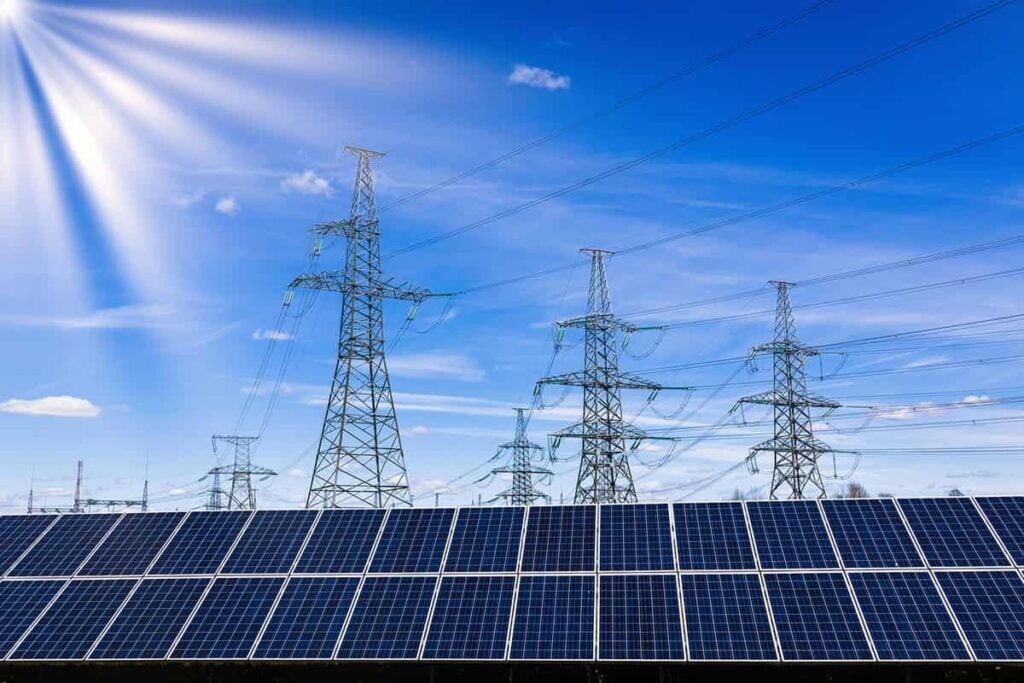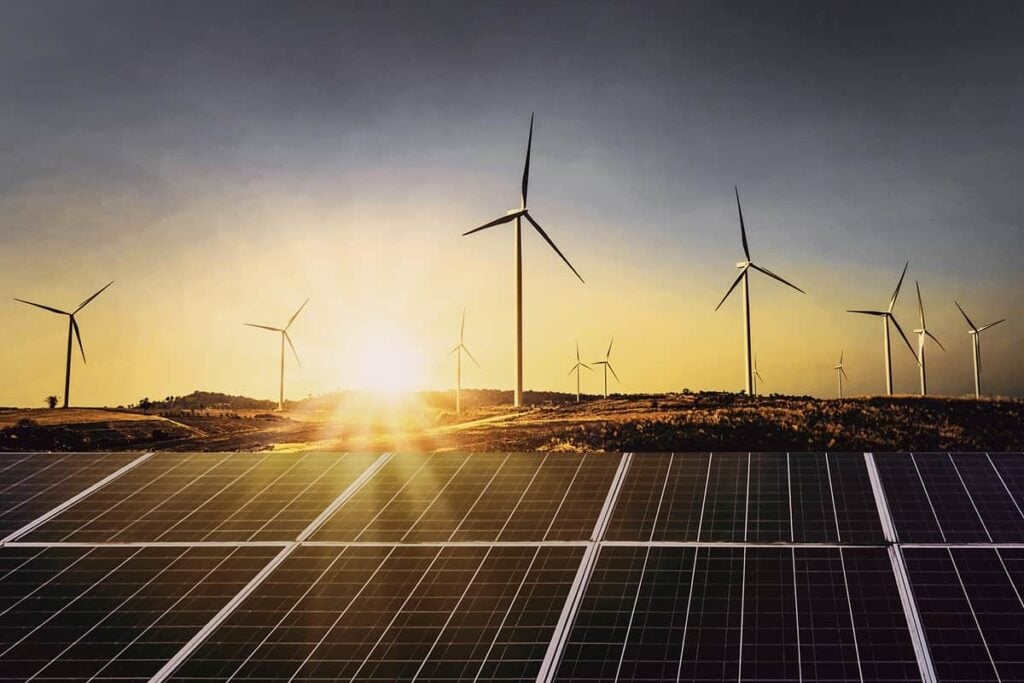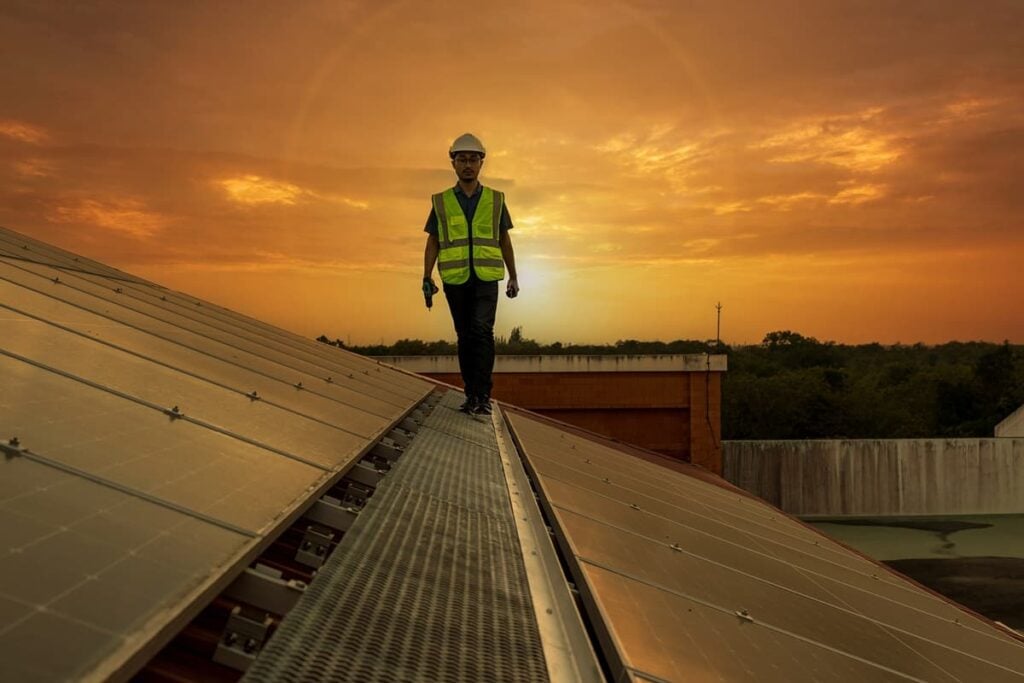Drones and Robots That Clean Wind Turbines
Table of contents

In our recent article on Vestas, the largest wind turbine manufacturer in the world, we talked about how wind power is on a steep growth trajectory with $4.5 trillion expected to blow into the sector over the next 30 years. In the company’s latest annual report, we noted that their services division is growing by double digits with a healthy margin of 25%. As onshore and offshore wind turbine installations gain traction, service requirements will grow proportionately.
Today, most turbines are serviced by industrial climbers who hang off the edge of wind turbines cleaning gunk off the blades. It’s a manual process which is slow, dangerous, and expensive, not to mention it results in significant downtime. One Latvian startup is looking to replace those dull, dirty, and dangerous jobs with drones and robots they’ve developed in-house. We recently sent one of our MBAs over to the Land of Blue Lakes to meet with Janis Putrams, co-founder of Aerones, and learn a bit more about some very cool toys.
Aerones
Founded in 2015, Riga, Latvia startup Aerones has raised $5.8 million to develop heavy payload drones and robots for the cleaning and maintenance of wind turbines. The three founders initially built the company around heavy-duty tethered drones for firefighting. These remote-controlled drones can carry up to 200 kilograms and reach a height of 300 meters in just six minutes after deployment, making firefighting efforts quicker, safer, and more efficient. They can also execute search and rescue missions in case somebody gets trapped in a high-rise building.

As firefighting is a key (and hazardous) municipal service, the startup found that obtaining certifications and service contracts took up too much time due to bureaucracy, something that a cash-poor startup can’t deal with for very long. Based on some input from one of their clients, the team pivoted into the cleaning and maintenance of wind turbines in early 2018. In just a year, Aerones refined its drones for the specific problems that turbine operators face and developed a special robot focused on turbine blade cleaning and maintenance that does the necessary work at one-fifth of the cost of human industrial climbers. Now, 90% of the company’s revenues come from wind turbine contracts, and the rest from cleaning high-rises.

After being admitted to Y Combinator’s accelerator program in January 2018, Aerones has moved their company headquarters to Silicon Valley while keeping research and development in Latvia. The first major funding round of $2.2 million came in February of this year and is being used for in-house R&D and prototyping. All of this happens in a warehouse on the outskirts of Latvia which makes the startup’s product development loop very agile. The talented team has created their own robotics, drone, and machine vision solutions, and even has a life-sized wind turbine blade installed to test new developments right then and there.

Services and Value Proposition
Aerones is continuously developing its service offering based on client interviews and pain points. Originally, they only used drones until realizing that some dirt, typically in Mediterranean climates and industrial zones, only comes off with direct forceful scrubbing. That’s when they built a robot that is positioned on wind turbines by winches, and that can apply greater cleaning pressure, find smaller faults, and coat the blades with a special coating. These robots carry different “arm” modules for different tasks and can deal with tasks such as the following.
- Inspections: Drones can only fly within 3 meters of turbine blades for safety reasons, and cannot see smaller faults like fiber damage to the blade. The startup’s robots not only note the smallest of damages, but can estimate required procedures and save a round of human inspection that usually follows a drone inspection. The end result is less maintenance downtime.
- Cleaning off dirt, bugs, and bird droppings: When foreign objects accumulate on the blades over time, the turbine loses efficiency that results in up to 20% revenue loss. The robot cleans a turbine in a day instead of multiple days, and can also work in adverse weather conditions, all while costing one-fifth of the amount industrial climbers charge.
- De-icing & application of coating: In colder climates, ice builds up on turbine blades and imbalances them. Falling ice also represents a safety hazard. When ice accumulates on turbine blades, operators either stop the turbine altogether and wait until the ice melts, or use a helicopter to spray the blades with hot water, potentially damaging the blades with the temperature difference. Aerones’ robot can apply an ice-phobic nano coating to the blades for a few thousand dollars a pop, so the ice doesn’t stick. Compare this to a loss of $70,000 that an Aerones customer incurred on one turbine in one year because of ice buildup. The coating was developed by a third-party and Aerones is piloting it on a handful of turbines in the Nordics.
- Lightning rod inspection: Wind turbines are tall – the largest of them is 260 meters high – so they are prone to lightning strikes. While they have a built-in lightning rod, it needs to be checked regularly to ensure it can bear such a jolt of electricity, otherwise, a lightning can easily destroy the blades. Once again, this inspection is done at a fraction of the time it takes for humans to do it.
- Condensed water outlet cleaning: Water condensation can form on the inside of turbine blades thanks to temperature differences between day and night. It is released through a small hole at the end of each blade. If the outlet clogs over time, the water gathered at the end freezes and damages the blade. The startup’s robot uses machine vision to find the outlet and unclog it autonomously.

- Leading edge erosion: Probably the biggest problem for turbines is when the edges corrode. The blades spin so fast (nearing 186 mph or 300 kph for the largest models) that they are damaged by raindrops and bugs over time creating structural damage and shortening the lifetime of the turbine significantly. The issue is so common that the service team at Aerones has never seen a turbine that didn’t require leading edge repairs. The robot is able to spot the smallest signs of leading edge erosion, and autonomous repair capabilities are currently being developed.
In addition to lower costs and less downtime, Aerones can also preempt issues that arise during normal operation. Cheaper servicing costs allow for more regular maintenance which ensures performance loss is minimized over the lifetime of a wind turbine. Mr. Putrams confirmed that frequent maintenance not only keeps turbines performing well, but also adds an extra year to the turbine’s lifetime. A wind turbine can last up to 25 years, so this translates to an additional 4% of revenue over the lifetime of the turbine at no additional cost. Here’s a chart you can use at the next board meeting to get the C-level types on board.

Aerones’ Business Model and Customer Base
Any number of business models might work for such a service offering, but the current method involves selling “service packages” to wind turbine operators, service companies, and manufacturers for in-house execution. In order to scale faster, they’re looking to move towards a franchise model – selling technology, hardware, training, and procedure manuals as a package to service companies. The new business model will roll out following the completion of a franchise pilot they’re currently running.
Aerones has ten customers that own or service more than 60,000 turbines, including the top seven operators and manufacturers on the market. The company has agreements to service 200 turbines located in Latvia, Germany, Sweden, France, Spain, the US, and Brazil. With a flagship customer like GE Renewable Energy, they’ve certainly received a great vote of confidence that the technology works.
Future Plans
The team is constantly developing new applications for its maintenance robot, including leading edge repair steps, crack stitching, and third party sensor retrofitting. On the back-end, they’re working on picture and evidence automation that automatically sends inspection footage to a cloud-based client portal where customers can look at and compare inspection results over time. (Sounds similar to what Invert Robotics in New Zealand is doing.)

The company is also working on a remote-control system for its robots and drones using 5G mobile networks. Using this method, only the service setup people will need to be on location, while the actual operators can do the inspection and maintenance work sitting in their offices thousands of miles away.
Aerones hasn’t given up on its firefighting ambitions either. They’ve refined their firefighting drone to incorporate tilting propellers that counter the effects of wind gusts and the high-pressure fire hose and ensure it remains fully horizontal during its mission. The technology is ready for launch and the team plans to return to it when they can fund a firefighting division internally, without involving outside investors.
Conclusion
Aerones is a prime example of how beneficial technology can be when coupled with correct execution. The startup was flexible enough to take their core competences and pivot towards a more rewarding sector when their original idea didn’t pan out, and did it in less than a year. Now, the team has a solid business offering that is cheaper, better, quicker, and safer than traditional methods, and serves the largest players in the wind power sector. The next step for the company? A Series A funding round in the summer of next year that will finance further expansion and the transition to a franchise model.
Sign up to our newsletter to get more of our great research delivered straight to your inbox!
Nanalyze Weekly includes useful insights written by our team of underpaid MBAs, research on new disruptive technology stocks flying under the radar, and summaries of our recent research. Always 100% free.















I am a Duke student working on the efficiency of wind turbines and studying the effects of deicing on wind turbines. I am interested in knowing the kind of techniques that your company employs and what are a few of the challenges that you are facing. Also, I am interested in knowing the improvement in the efficiency of the wind turbines after the deicing operations were carried out.
Please let me know when would be a good time to connect with you.
Thank you for your interest! Please reach out to the company directly – Aerones – as we’re just a media/research firm.